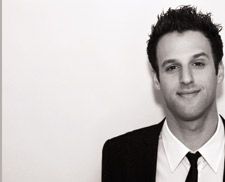The three points
The details that posterior teeth possess fascinate many dental professionals. The intricate lobes and forms that posteriors develop in nature are always fun and challenging to recreate when fabricating restorations. Many tools have been developed by companies to aid in this process, however I always have been fascinated by the handmade tools I have seen technicians create to aide in their quest to recreate nature.
The details that posterior teeth possess fascinate many dental professionals. The intricate lobes and forms that posteriors develop in nature are always fun and challenging to recreate when fabricating restorations. Many tools have been developed by companies to aid in this process, however I always have been fascinated by the handmade tools I have seen technicians create to aide in their quest to recreate nature.
In this article I would like to share three tools I use on a daily basis when creating restorations in my laboratory. I call these tools the three points (Fig. A). They include old soft tissue tips, a glass scriber and an endodontic needle. Through this article, it is my goal to show technicians how these three tools allow for easier and more consistent fabrication of dental restorations.
Method
01 The case is a typical everyday posterior restoration that is very common in laboratories across the world (Fig. B). For this patient, the doctor wants a full contour pressed restoration. To start, I wax up the restoration on a solid working model that replicates the intraoral environment in full (Fig. C).
02 Once the wax-up has full, ideal contour, I do a final check from every angle to ensure I achieved all the details I wanted to capture in wax (Fig. D). I have learned to always refer to nature when doing the final check in wax (Fig. E).
03 Once I am satisfied with the outcome, I then transfer the full contour wax form to the duplicated master die to achieve an optimal marginal fit (Fig. F). The restoration is then sprued for investment (Fig. G).
04 Now is when the first point-the left over soft tissue tip-is extremely useful for investment purposes (Fig. H). The tip is used because it is very soft and flexible and will allow investment to be placed into sensitive areas that are usually difficult to reach (Fig. I). This is a great trick for capturing all the details I want to transfer from wax to ceramic. The results are easy to see when the pressings are inspected after being devested (Fig. J).
05 After fitting the restoration I next move on to the surface treatment that gives the restoration texture details (Fig. K). This is where I use the second point-the glass scriber-to characterize fine texture details. The scriber is a carbide point that is designed to allow the user to draw on glass. This comes in handy for surface treatment because it allows the user to have complete control of the surface marks being created (Fig. L).
06 Once the surface treatment is complete it is time to recreate surface color and fissure effects that are found in natural teeth (Fig. M). I like to use the third point-a Monoject endodontic needle (Tyco)-to apply the effects using GC America’s GC Initial IQ Lustre Pastes and InVivo stains (Fig. N).
There are two ways to use this tool when working with Lustre Pastes. In the first you can use the needle to suck up some paste and then lightly dispense the color into the fissures (Fig. O).
In the second technique, the barrel of the needle is filled with a medium viscosity glaze liquid and the pastes are picked up dry. The liquid can then lightly be dispensed to draw the stains in the fissure, controlling the moisture of the stains based on how much liquid is being dispensed (Fig. P).
07 Through the use of these techniques and the three points, natural effects can be achieved in the final restoration (Fig. Q). While these techniques and tips can help achieve natural looking restorations, the only way to see how close these efforts have come to recreating nature in the final restorations is to compare them with nature itself (Fig. R).
Once these techniques are taken to completion with care, the technician should have a restoration that blends harmoniously in the mouth with surrounding dentition from every angle (Fig. S).
About the author

Joshua Polansky earned his Bachelor of Arts degree, Summa Cum Laude, from Rutgers University in 2004. While working part-time at a dental laboratory, he took advantage of an opportunity to apprentice with distinguished master technician, Olivier Tric, who opened his eyes to a whole new world of possibilities. He continued his studies in Europe with other experts in the field such as Klaus Mutertheis. Joshua earned his Masters degree in dental ceramics at the UCLA Center for Esthetic Dentistry under Dr. Edward McLaren and continued training under Jungo Endo and Hiroaki Okabe at UCLA’s advanced prosthodontics and maxillofacial program. He currently resides in Cherry Hill, NJ with his wife, Emma. He is the owner and operator of Niche Dental Studio, a collaborative boutique Dental Laboratory, with his father Dr. Barry Polansky.
ACTIVA BioACTIVE Bulk Flow Marks Pulpdent’s First Major Product Release in 4 Years
December 12th 2024Next-generation bulk-fill dental restorative raises the standard of care for bulk-fill procedures by providing natural remineralization support, while also overcoming current bulk-fill limitations.